The Headless Way
Direct access to our essential nature
is freely available to everyone here and now
is freely available to everyone here and now
The Hierarchy
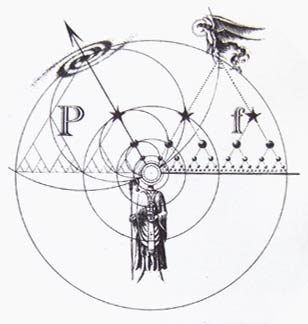
The Hierarchy of Heaven and Earth
A View by Richard LangMY CELLULAR IDENTITY

Who am I?
Stationed several feet away my observer finds I am a person.
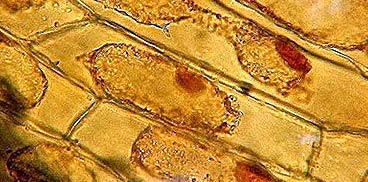 However, my observer is not content to remain at a distance. Armed with a microscope she approaches to see what I am made of. She discovers that at close quarters I am a community of cells. Using her instruments she enters this cellular society that I am, taking up what is in effect a cell's view of me.
However, my observer is not content to remain at a distance. Armed with a microscope she approaches to see what I am made of. She discovers that at close quarters I am a community of cells. Using her instruments she enters this cellular society that I am, taking up what is in effect a cell's view of me. What does she tell me about my life at this level?
My body contains about 100 thousand billion cells that belong to about 200 different types.
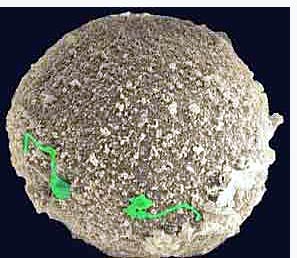 The largest kind of cell, an ovum, is about the size of a pin head, but most others are so much smaller that 100,000 would fit in the same space. Just one teaspoon of my blood contains about 25 billion red blood cells. Each type of cell in my body has a different job. For example, my red blood cells carry oxygen, cells in my eye sense light, and cells in my intestine absorb food. Life expectancy depends on the type of cell - my liver cells, for example, live for over a year whereas my stomach lining cells may be recycled within a couple of days. Old cells in my body are replaced with new ones at a rate of millions per second, each born from the division of a previous cell. Trace the ancestry of any cell in my body and you would eventually arrive back at the original fertilized ovum - there is no break in the chain of life.
The largest kind of cell, an ovum, is about the size of a pin head, but most others are so much smaller that 100,000 would fit in the same space. Just one teaspoon of my blood contains about 25 billion red blood cells. Each type of cell in my body has a different job. For example, my red blood cells carry oxygen, cells in my eye sense light, and cells in my intestine absorb food. Life expectancy depends on the type of cell - my liver cells, for example, live for over a year whereas my stomach lining cells may be recycled within a couple of days. Old cells in my body are replaced with new ones at a rate of millions per second, each born from the division of a previous cell. Trace the ancestry of any cell in my body and you would eventually arrive back at the original fertilized ovum - there is no break in the chain of life.Everything I do as a human being is also done by my cells. I lift a finger and billions of them act. How do they know what to do? Or rather, since these cells are myself at close range, how do we know what to do? The answer lies in the relationship between these two levels of myself.

Vertical Movement - Parts And Wholes
My observer can either investigate what I am on a particular level, or she can move between my levels. In the first instance she moves horizontally around me, in the second she moves vertically - towards or away from me. As she moves towards me she finds my individual human body breaks down into my billions of cellular bodies. As she moves away she finds my billions of cellular bodies coalesce and build up into my one human body. If she were to penetrate further inwards she would discover my cellular bodies breaking down into molecules, which in turn break down into atoms and then particles, which finally break down into practically nothing at all. I who am here at the centre of all my regions see that at centre I am indeed nothing at all - or rather No-thing, or awake capacity. If my observer were then to reverse her direction she would discover my particles becoming atoms, my atoms becoming molecules, and so on, till she arrived back at the range where I am human.As my observer retreats, observing in turn my particles, atoms, molecules, cells and then my human body, she observes how each level transforms into the next. First she sees one individual in her field of view, then many, then one again, but this new individual is higher in status. Pulling away from a single atom she finds other atoms coming into view. Stepping back further she finds these many atoms joining into one molecule. Pulling away from that molecule she finds it is part of a community of molecules that, at a greater range, are one cell. And pulling away from the cell she finds it is a cell-in-community - a vast population which however, when seen from afar, is no longer a countless number of cells but one person. She notes that my identity evolves to higher and higher levels the further she retreats from my central nothingness. On the other hand, as my observer approaches me she finds an individual at one level breaking down into many individuals and then just one individual at the next level. The closer she approaches my central nothingness, the more primitive the individual she finds.
My observer's vertical movement, away from me and towards me, reflects the continual traffic of information flowing between my levels. My behaviour at the human level is continually being translated downwards or analyzed into my behaviour as billions of cells, and then my behaviour as one cell, and my behaviour as one cell is continually being translated upwards or synthesized into my behaviour as billions of cells and then my behaviour as one person. It is by working together in community that many individuals at one level rise to the status of the individual at the next level. Each of my cells doing its own job, combined with all its neighbours doing their jobs, results at the next level in me, say, typing these words. At their own level my cells know nothing about me typing about them. Or, put another way, at the cellular level I know nothing about Richard. Yet at the human level I know about my cells. It is because I can take up the mobile viewpoint of my observer as she moves from my human level to my cellular level and back, reporting to me what she finds, that I am aware that I am both of these levels. Seen through her eyes and microscope, 'I' the human being and 'I' the cell are two aspects or levels of a 'me' whose levels are many.
This two-way vertical movement through my regions, this continual transformation of one level into the next, this building up and breaking down of myself that my observer notes as she retreats from and approaches me, is the key to the way the whole organization (that I am) functions. All my behaviour begins in my central nothingness and translates upwards through my layers into my human region (and beyond). The level of behaviour an observer encounters depends on the range at which she intercepts my actions. Station yourself at close range and I am a cell going about my own business. Step back and I am billions of cells working together. Step back even further and I am a person. I am one yet I am many. All my actions as a human being can be 'explained' in terms of cellular activity, and all my actions as a cell can be extrapolated eventually to my human behaviour. But look further, beyond these levels, and you will find my behaviour originating at deeper levels, eventually emerging from the mysterious nothingness at my core. Or, stepping back, you will find my behaviour as a human, being worked up into the behaviour of myself as an individual at higher and higher levels, so that lifting my little finger now eventually affects the remotest galaxy.
The Cell For Itself
For my observer, at a fraction of an inch I am cellular. What am I for myself? At the human level I am capacity for other human beings - just as they are capacity for me. It would make sense if at the cellular level I were structured in the same way so that each cell in my body is for itself capacity for its neighbours.This assumption is supported by the fact that my central emptiness is not simply the source of my human appearance but is the source of every one of my appearances, no matter what its level. This mystery that I am is at the heart of my cellular life just as much as it is at the heart of my human life. Thus to look here is to see the True Nature not only of myself as a person but of myself as a cell too. Being perfectly placed to see the innermost identity of each of my cells, I report that the identity of each and every one of them is capacity!
At the cellular level I am capacity for other cells. Of course, the view out at this range will be nothing like the view out at the human level. Cells are primitive animals - brainless, blind, deaf and voiceless. But no doubt their view out - from this boundless capacity - is just right for life at this level. Certainly cells are very good at getting on with what they have to do.
Because each of my cells is capacity for its neighbours, the method by which I as one cell transform into I as many cells and eventually into I as a person is laid bare - my nature as a cell is to include and embrace and become the other cells around me. I am my neighbours. Including every one of them, I am a person. Including only some of my cellular neighbours I contract to the level of an organ perhaps. Including none but myself I am already breaking down into less than a cell, for presumably I can sense only part of my cellular body, just as at the human level I can see only part of my human body.
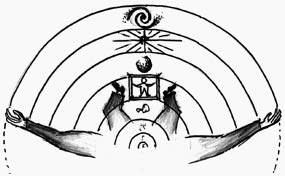
Trading Cellular Faces
What I am capacity for depends on how far I look. Looking out several feet I find humans. Looking out a fraction of an inch I find cells. I can test this by looking through a microscope at my observer. At this range she is a cell - just as I am for her.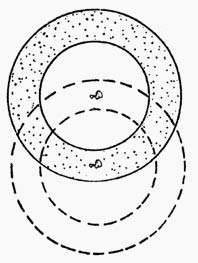
Thus at this range I have her cellular face, so to speak, and she has mine. We trade cellular faces. At this level, just as at any other level, neither of us can see our own appearance - we need the other to register it and then reflect it back to us.
When my observer studies me at this range she places herself, via her microscope, at a similar distance from a cell of mine as other cells are placed. At this range she is taking up the viewpoint of one of my cells and finds herself capacity for me as a cell - there at the far end of her microscope. If conceivably I could look back at her from this level then I wouldn't see her as a cell, but would see my own cellular body reflected in her lens. Thus we would each be capacity for a cell, though I would be seeing my own reflection.
Because my observer is looking from the human level down into the cellular, she can report back to me at the human level what she finds at the cellular level. You could say that a conversation you and I might be having about your cells and my cells is a conversation our cells are having with one another via the human level.
None of us lives simply at the human level but embraces - and is - the continual transformation of the human into the cellular and the cellular into the human. Without this there is no human life.
The Inner Life of a Cell - Video


















